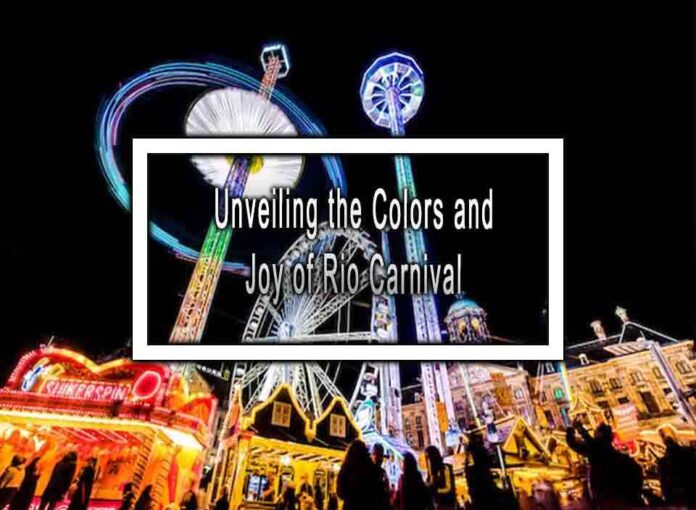The Rio Carnival, or Carnaval in Portuguese, is one of the world’s most vibrant and colorful celebrations. Held annually in Rio de Janeiro, Brazil, this event is a joyful and extravagant spectacle that captivates millions of participants and spectators from around the globe. Here, we unveil the colors and joy of the Rio Carnival:
1. Origins and Tradition:
- The Rio Carnival has its roots in European traditions brought to Brazil by Portuguese settlers. Over time, it evolved into a unique blend of indigenous, African, and European influences, creating a distinct Brazilian carnival culture.

2. Samba Schools:
- The heart of the Rio Carnival is the samba schools, which are community organizations that prepare year-round to participate in the parade competitions. These schools represent different neighborhoods and are known for their elaborate floats, costumes, and samba dance performances.
3. Parades:
- The main attraction of the Rio Carnival is the samba parade, which takes place in the Sambadrome, a purpose-built parade stadium. Each samba school has its own theme and story for the parade, featuring colorful and artistic floats and thousands of performers.
4. Extravagant Costumes:
- Participants in the Rio Carnival wear elaborate and often revealing costumes adorned with feathers, sequins, and vibrant colors. The costumes are a visual feast and an essential part of the celebration.
5. Samba Music and Dance:
- Samba music is the heartbeat of the carnival. Samba dancers, known as “passistas,” perform intricate and energetic dance routines in the parade. The rhythm of samba is infectious, and spectators often join in the dance.
6. Street Parties (Blocos):
- In addition to the parade, the streets of Rio are filled with block parties, or “blocos,” where people dance, sing, and celebrate in colorful costumes. These parties are open to everyone and contribute to the festive atmosphere.
7. Carnival Queens and Kings:
- Each samba school typically has a queen and a king who lead the procession. These figures are selected for their charisma and ability to embody the spirit of the carnival.
8. Street Art and Decorations:
- The entire city of Rio de Janeiro comes alive with vibrant decorations, street art, and murals during the carnival season. The city becomes a canvas of color and creativity.
9. Traditional Foods and Drinks:
- The Rio Carnival is a time to enjoy traditional Brazilian dishes and drinks, such as feijoada (a black bean stew), caipirinhas (cocktails made with sugarcane spirit), and various street food delights.
10. Multicultural Celebration:
– The Rio Carnival is a celebration of Brazil’s rich multicultural heritage, with influences from African, indigenous, and European cultures coming together to create a unique and inclusive event.
11. Carnival Balls: –
In addition to the street festivities, there are exclusive carnival balls and parties held at venues across Rio. These events feature live music, DJs, and glamorous attire.
12. Global Appeal: –
The Rio Carnival has gained international recognition and attracts visitors from all over the world who come to experience the unparalleled joy and spectacle.
13. Role in Brazilian Culture: –
The Rio Carnival is an integral part of Brazilian culture, fostering a sense of unity, creativity, and national pride among Brazilians.
The Rio Carnival is a dazzling and exuberant celebration of life, culture, and tradition. Its vibrant colors, lively music, and infectious energy create an atmosphere of joy and togetherness that is unlike any other festival in the world. Whether you’re dancing in the parade, joining a street party, or simply soaking in the spectacle as a spectator, the Rio Carnival is an experience that leaves a lasting impression of color, culture, and pure, unadulterated joy.











